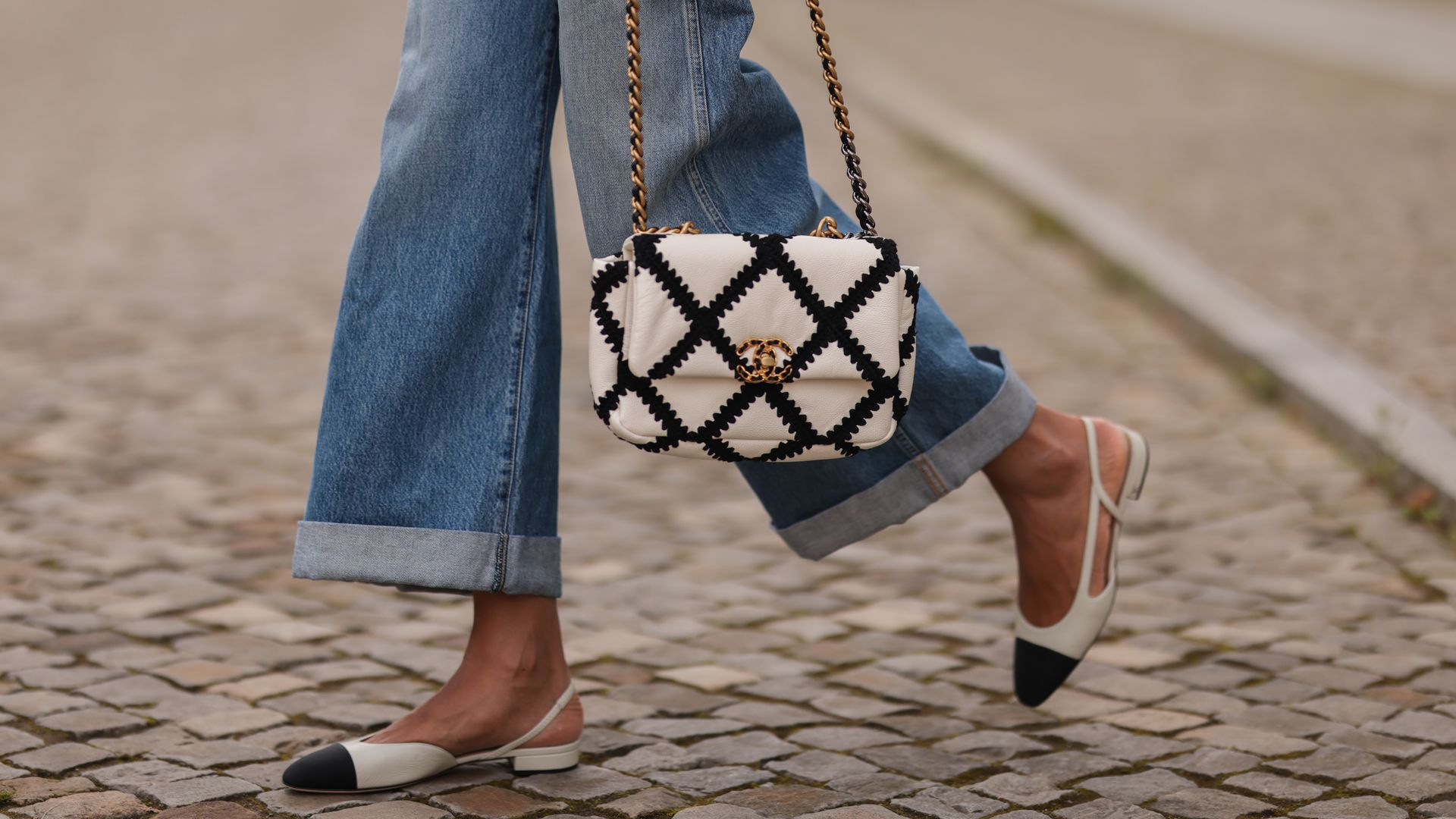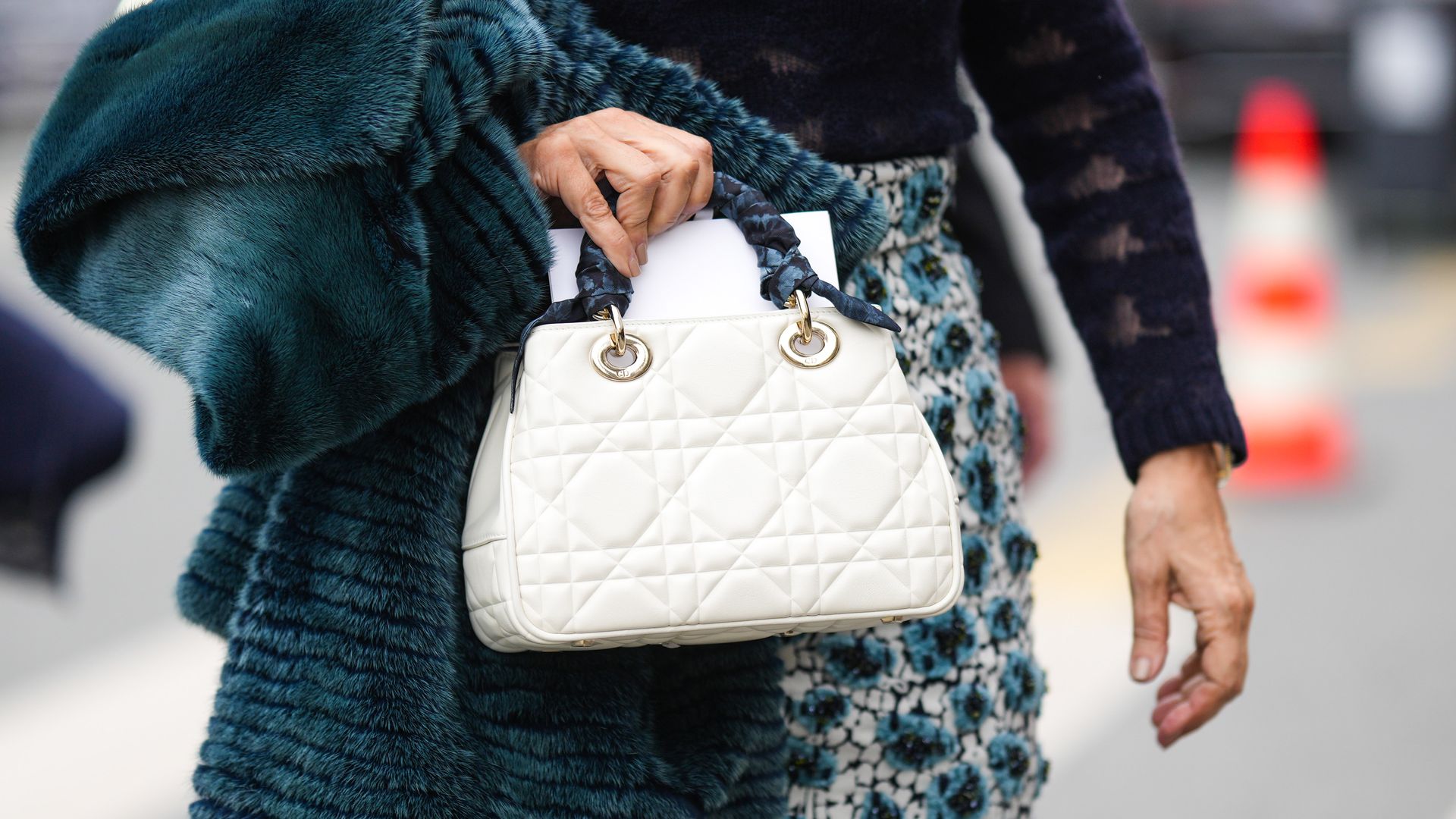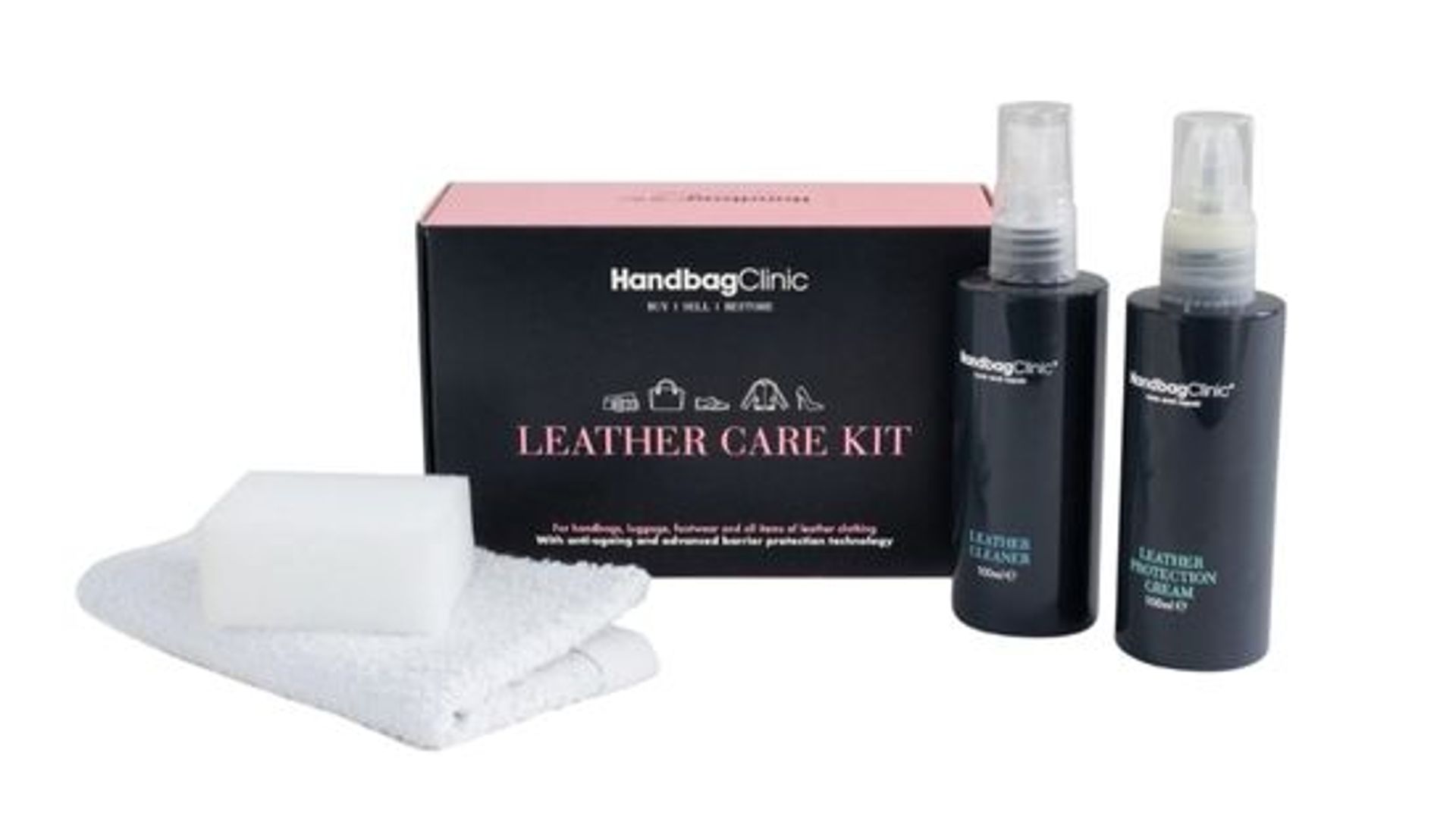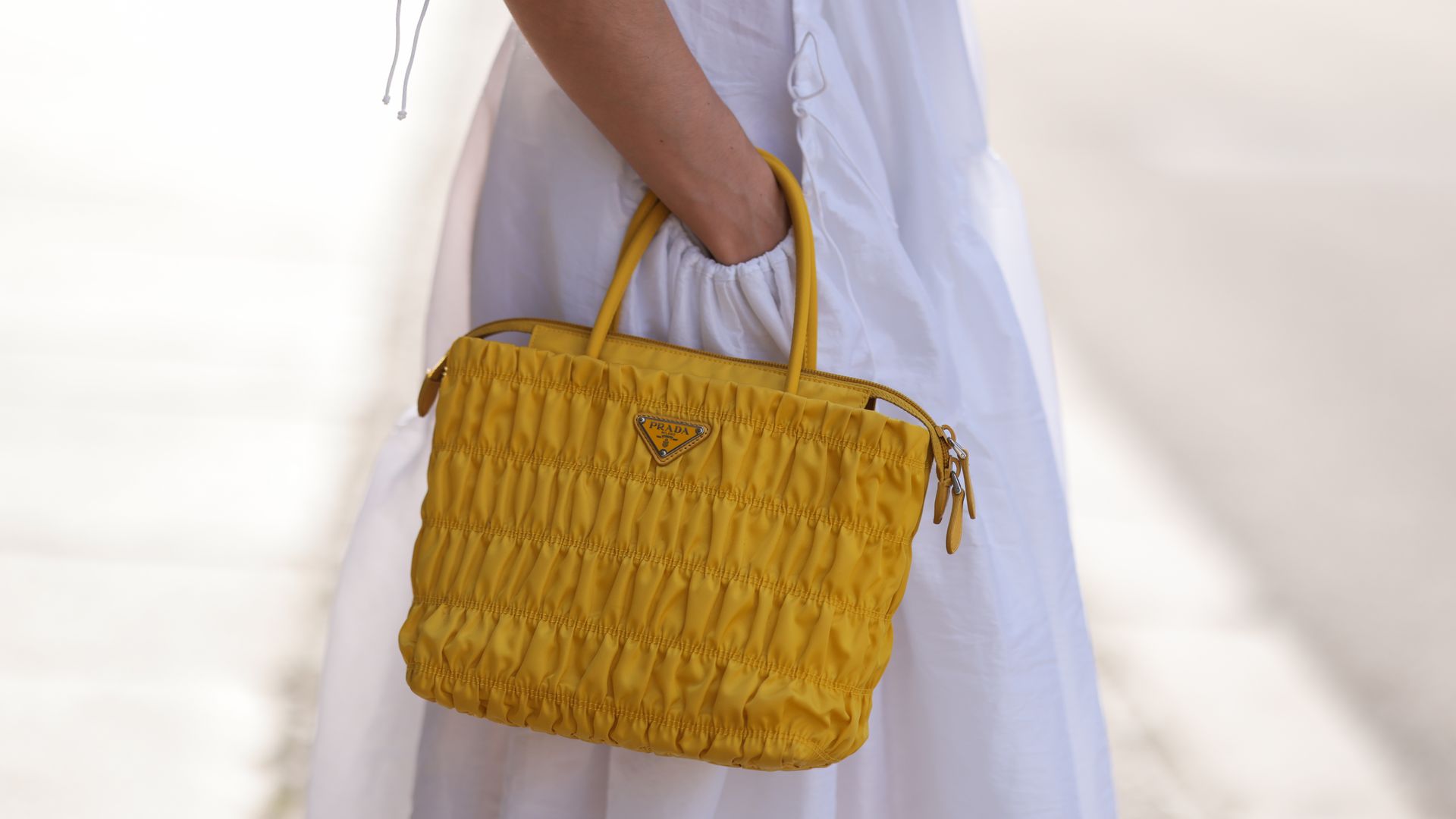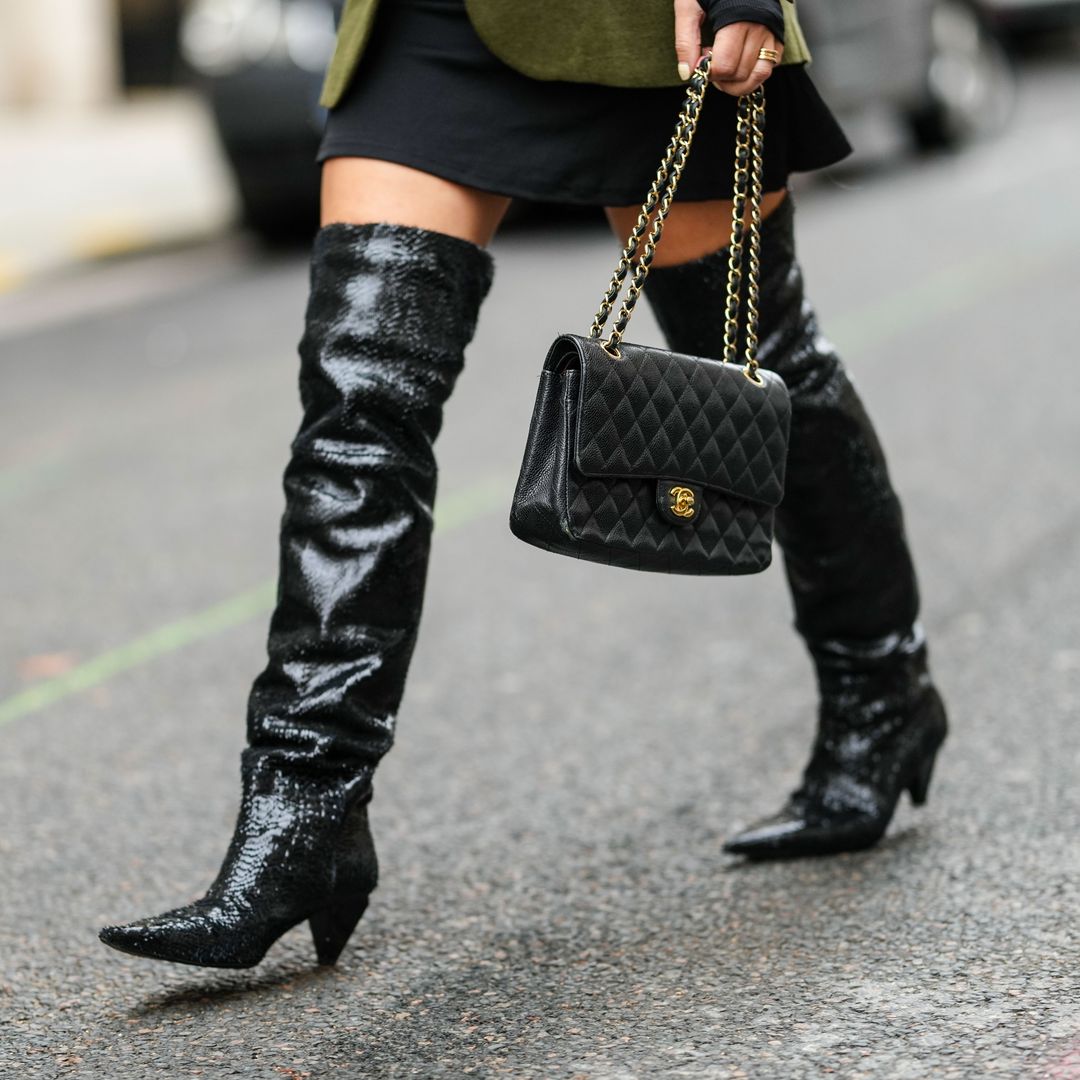If your internet search history is littered with frantic variations on the phrase "how to clean your leather bag", suffice to say, there's no need to ask how your day is going.
Truly, our heart goes out to you. There may be no use crying over spilled milk, but if you've involuntarily doused your cream leather handbag in coffee, we can fully understand why every fibre of your being is urging you to bawl into your pillow.
MORE: Best designer handbags: 12 killer styles to accompany you on your next night out
READ: The best designer bag rental platforms
Accidents happen, and acting fast can make all the difference when it comes to restoring your leather bag to its original glory.
Hello! Fashion caught up with Charlotte Staerck, co-founder and CEO of luxury restoration service The Handbag Clinic to find out how you can keep your arm candy in tip-top condition:
How do I remove stains from a leather bag?
"First of all, assess the damage. Not all stains are created equal, and it's important to work out what you're dealing with. Most luxury accessories are made from lightly treated leathers, renowned for their luxe, butter-soft feel. Unfortunately, this means that they are often extremely absorbent – less than ideal if yours comes into contact with a potentially damaging everyday liquid."
READ: Vintage chanel handbags: 5 things to know before making your first purchase
MORE: Top tips for shopping for a second hand luxury bag with designer resale expert Sellier
How do I remove grease stains from a handbag?
"Hand cream is a common culprit for causing grease-based stains on leather bags – often found on the handles. Grease absorbs very quickly, so you need to act fast," Charlotte explains. "If left to absorb, a grease stain will leave a darkened oily mark. If your bag has had a protection treatment (a must) this will buy you a little more time before the stain settles in."
"Do not apply water or any cleaning products you may have to hand - you will at this point only make the staining worse. Instead, start by blotting the stained area as soon as possible with a clean, dry cloth or tissue - you want to absorb as much of the liquid as possible. Once you have removed the excess liquid, you should then blot the stained area with a damp cloth or tissue using warm water only. Start at the outside of the stain and work inwards; this will stop the stain from spreading outwards."
How do I remove denim marks from a leather bag?
"These occur when a white or pale coloured bag rubs against a pair of jeans or denim jacket. Similar to hair dye, denim stains penetrate fast and deep. The key to removing these are upfront protection and speed. The longer the mark is left on the leather, the more it will penetrate."
"If you have one of our Handbag Care kits, you should clean the stained area with the cleaner in the kit. Dab the stained area with a dry cloth or tissue to absorb any left-over water or cleaner. Never rub the stained area as this can cause the stain to spread. Do not apply heat directly to the stained area as this can set the stain. Your bag is best left to dry in a warm room. If any staining remains once dried, contact The Handbag Clinic for a quote, stain removal starts at just £50."
How do I remove ink stains from a handbag?
"This is not a DIY job. Ink stains are stubborn and deep, a little like dye stains, and can bleed to other parts of the bag when diluted. Once the ink is absorbed it physically dyes the material, therefore specialist colour work is required to remove it fully. Your best chance of restoring your handbag to its former glory is therefore taking it straight to an expert, who will use a specialist cleaner in a blotting motion to prevent the ink spreading further."
Do different types of leather bags require different care?
"It’s important to differentiate between leather types before attempting to clean your leather bag at home," Charlotte advises. "Make sure you choose products that are specially designed for gently cleaning the specific material of your leather, suede/nubuck or fabric handbag. Abrasive chemicals and luxury materials are disastrous bedfellows."
"Leathers with a smooth surface in a natural grain, favoured by Chanel, are often crafted from calfskin or lambskin. Whereas embossed leather is a grained leather, such as Saffiano. The key difference when it comes to cleaning these at home is the pressure and technique. Smooth leather should be cleaned with a specialist leather cleaning product, with gentle pressure applied – don’t be tempted to use force. With grained Saffiano leather you can use the same leather cleaning products, but ensure the solution is worked into the grooves of the leather and not just the surface."
"Cleaning suede and nubuck leather is much more complex and best left to the experts to ensure the fibres are fully protected," Charlotte says. "If you must attempt to clean suede at home, brushing it evenly and gently with a damp, not wet, specialist dauber may just give it that little bit of refresh it needs."
How to clean a leather bag in 4 simple steps:
1. Foam massage
"Start with one panel of your handbag and apply your leather cleaner onto the cloth provided. Work up a foam and massage this into each panel of your bag in turn, using a circular motion. Be sure to use an even covering of the leather cleaner to the panel to avoid water marks – it’s all about even distribution which is why applying the cleaning solution to the cloth will work best."
"Work around the bag concentrating on one panel at a time and then, after removing any loose dust or debris, you can do the same with the lining of the bag. Repeat this process, until the cloth you are using no longer shows any further dirt coming off the surface of the leather. Leave to dry naturally at room temperature so as not to dry the leather too quickly."
2. Protection perfection
"Paying particular attention to handles, corners and frequently used areas, apply our Protection Cream to the provided sponge and work it in in circular motions. This will not only nourish the leather, but once absorbed it will also create a liquid repellent barrier on the surface. Allow five minutes for the Protection Cream to dry. If you have a light-coloured bag or if it’s a particularly absorbent leather, you may want to repeat the protection process a couple of times to really look after those easily stained leathers."
3. Buff it up
"Once all the coats have been applied, buff them off with a lint-free cloth. This ensures there is no product residue remaining on the surface of the leather and ensures a tight seal under the surface. This process should be repeated every three months, or more if your bag is used more frequently. If instead your bag is suede or fabric, the protection comes in the form of a spray, which can be applied across the bag and again needs to be left to dry."
4. Stuff and store
"When your bag is not in use it should be stuffed to keep it looking structured – you can use soft tissue or, better still, a handbag pillow. Keep your bag in its dust bag when it’s not in use too to prevent dye contamination or damage from sunlight or other garments. The bag should always be stored in a cool, dry environment such as a wardrobe. High temperatures can make waxed edges or handles tacky to the touch which will, in time, affect their appearance and will require professional help to remedy," Charlotte says. "They should never be stored anywhere that contains moisture as this leads to bad odours, mildew or water staining."
How do I protect a leather handbag?
"As always, prevention is better than a cure and upfront protection is the best way to avoid a spillage or accidental mark becoming an actual stain. Before taking your bag out for the first time, start with a specialist leather protector such as our Protection Cream. This will shield the surface from superficial scratches and act as a barrier, repelling water, oils and other common substances that may come into contact with your bag. Apply a small amount of the cream to the sponge and work it into each panel of the bag in a circular motion."
"Remember that leather is a skin and needs its own skincare regime. So, you will need to keep on top of cleaning and protection treatments. If you use the bag every day you should do this every two to three months. If it is more of a weekend or occasion bag, every six to nine months will be enough to keep your item protected and looking great."
Charlotte Staerck's handbag cleaning Dos & Don'ts:
Do clean your bag regularly for optimum maintenance
"Leather is a skin and will absorb bacteria, oils and dirt so ensuring this doesn’t build up to the point that restorative work needs to be done is key," Charlotte says. "Be sure to get regular cleaning treatments and have the right products at home to continually care for your items. This prevents wear and keeps the condition of the leather beautifully. Handles see the most visible signs of wear so keep on top of this by giving them a regular wipe down – which is also essential for handbag hygiene."
Don’t use force or pressure
"The golden rule is ‘gently does it’. A light hand with gentle pressure is essential to protect the delicate fibres. You can always repeat the process if necessary."
Do invest in the best products for handbag care at home
"Having the right cleaning and protective products on hand is vital. The Handbag Clinic has its own range of patented Care Kits designed to create a professional finish for a choice of leather, suede or fabric items. These are specially designed to combat harmful elements that cause problems for handbags such as sun damage, spillages/liquid, general wear and tear and ink. The Care Kits come with everything you need including sponges, cloths and a brush in the suede kit so you have all the tools required to keep your bags looking as good as new."
Do test any products out on a small inconspicuous area of your handbag
"Always proceed with caution when attempting to clean your bag at home. Patch testing on an inconspicuous area, such as the inside, is an important first step."
Do act fast if you accidentally stain your bag
"The key to removing stains is upfront protection and speed. The longer the mark is left on the leather, the more it will penetrate."
Don’t be tempted to use baby wipes or try online cleaning 'hacks'
"Damage from baby wipes is one of the most common mistakes. Because baby wipes contain various cleaning chemicals, these can be too abrasive on pigmented leather and can lead to colour loss and leave water marks. This then requires specialist treatment. Other hacks we see wreaking havoc include vinegar, washing up liquid and even nail varnish remover."
Do be mindful of your leather type
"There is no one size fits all when it comes to leather handbag cleaning. Leathers with a smooth surface in a natural grain are crafted from calfskin or lambskin. Whereas embossed leather is a grained leather and the grooves need attention. The key difference when it comes to cleaning these at home is the pressure and technique. Nubuck and suede are best left to the experts to ensure the fibres are fully protected."
Do know when to hand it over to the experts
"If you are using the appropriate products and methods, it’s fine to clean your handbag at home. We sell care kits with everything you need to clean and protect a handbag, even the right cloths and sponges as using too abrasive material can cause damage. Anything other than maintenance cleaning should be left to the professionals. Some of the 'hacks' we see online are downright bizarre and potentially damaging."
Like this story? Sign up to our Hello! Fashion newsletter to get your weekly 'Fashion Fix' delivered straight to your inbox.
HELLO!'s selection is editorial and independently chosen – we only feature items our editors love and approve of. HELLO! may collect a share of sales or other compensation from the links on this page. To find out more visit our FAQ page.


